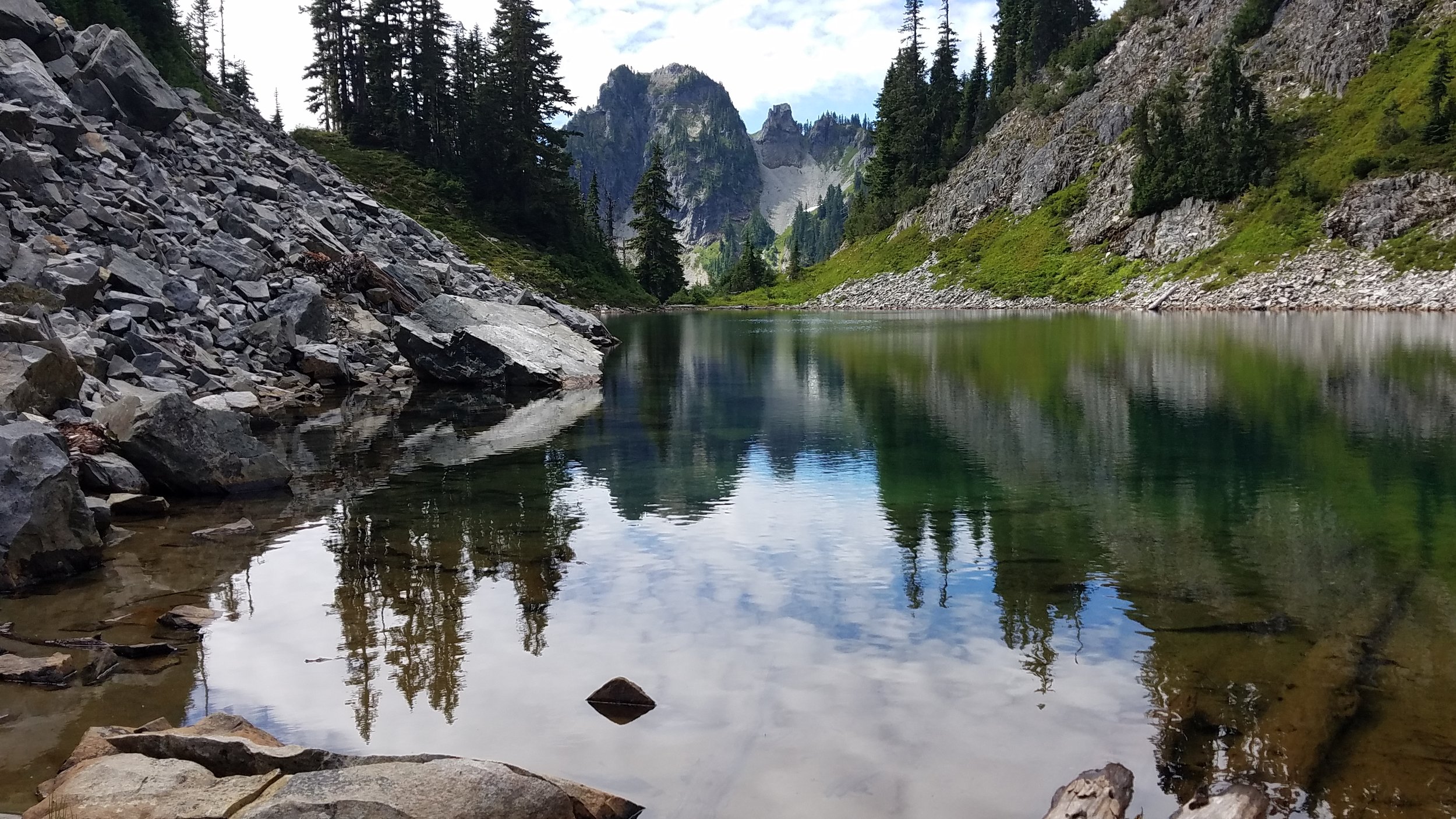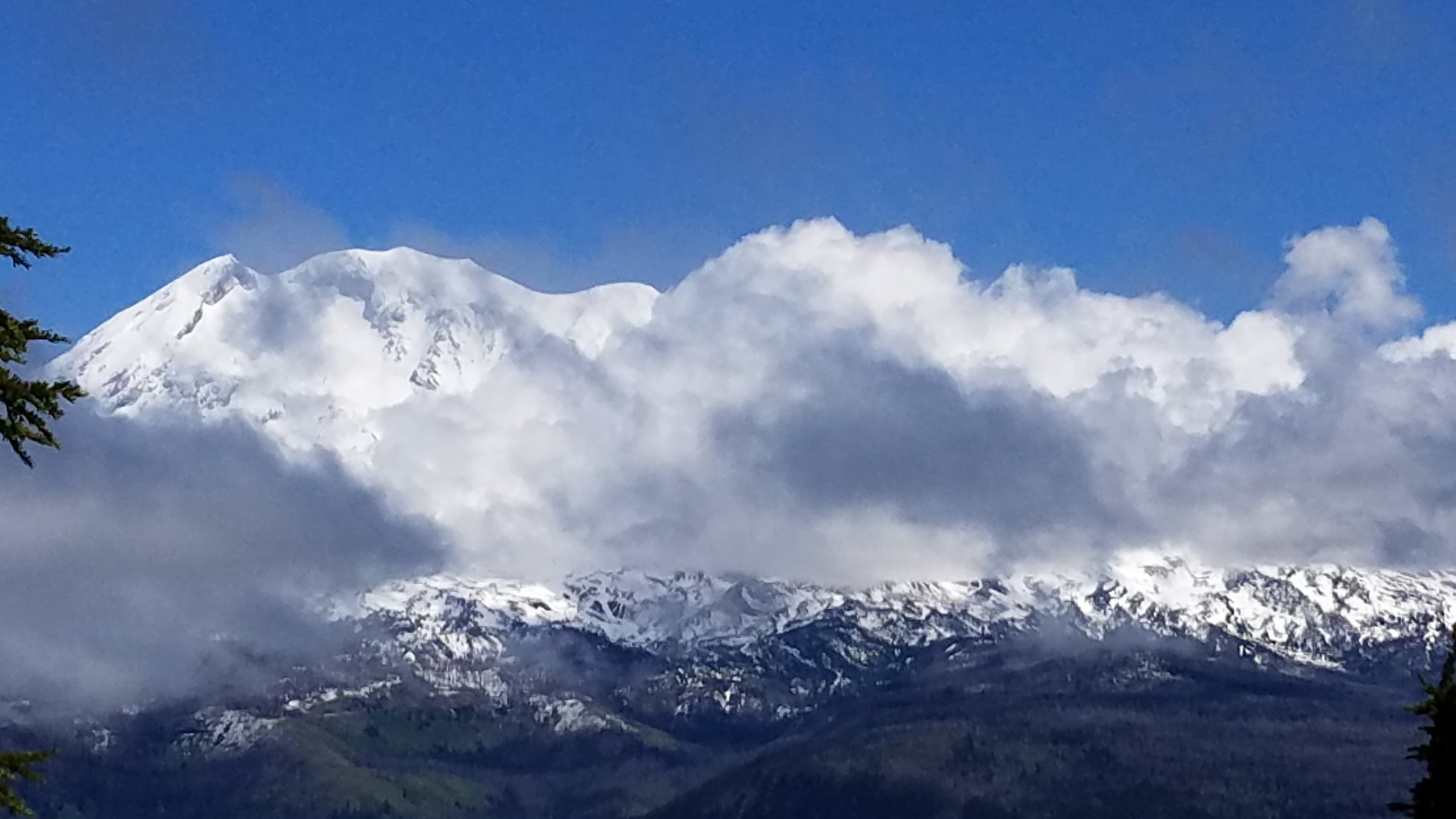…only I can’t tell you where it is and you can’t tell anyone once we show it to you.”
Over the summer a few of my fellow lake-swimming enthusiasts have been kind enough to take me to their secret lakes as long as I promised not to provide the name or directions to others. I’ve found these secrets easy to keep because Washington state boasts thousands of swimming lakes. I feel lucky to live in a landscape so pervious, pock marked, glacier scoured, and potholed that the secret holders are not depriving anyone of the experience of lake swimming.
Most of our swimmable lakes are accessible by public boat ramp, dock, beach, or trail. The secret lakes require way-finding skill and sometimes a bit of bushwhacking. Trail markers and cairns are entirely absent.
None of the secret lakes I’ve been to have official names and don’t always appear on maps. They become known because someone discovers them and then they tell a friend who tells two friends and so on. And, while I might tell you about these lakes, I cannot for the life of me retrace my steps to return to them or describe the roads and routes and landmarks that would get you anywhere but lost.
Photo by M.M. Ruth
So it was this past when when two friends guided me on a hike-scramble to this beauty. It was the clearest water I have ever swum in—so clear that it is easy to forget it is water. So clear that, as one friend said, “it’s hard to remember not to breathe it.”
It was what I might once have called “freezing” but now, after months of lake swimming, I’ll call it perfectly delightful cold. We swam, floated and swam some more. When the clouds parted and the sun shone down on the lake, we warmed up on the rocks on the far shore. The lake was silent save for the occasional squeak of a pika and the clattering wings of the grasshoppers echoing against the rocks and cliff. There was no human presence at all—just wilderness all around.
While the sun warmed our skin it also warmed the thin skin of the lake. When we slipped back into the water, the top few inches of the lake had noticeably warmed. To preserve that layer of warm water, we swam slowly without kicking and churning up the cold water beneath. I stretched out on my back and floated, spinning slowly around to memorize the contours of the shore, hill, and peaks and to take in the last bit of summer’s warmth.
I left the water and walked down the sandy shoreline toward my towel, lunch, and thermos of hot tea. I walked slowly, scanning the edge of water for newts. Something caught my eye. There on the beach, scrawled in the sand in all capital letters:



















